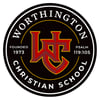If you've ever watched a preschooler try to tie their shoes, zip up their jacket, color "inside the lines," or cut paper, you know this for sure: the fine motor struggle is real at this age. All of those small muscle movements that require the eyes to tell the brain to tell the fingers, thumb and wrist to work together...it just doesn't happen overnight. It takes time and practice with a variety of activities to hone those fine motor skills that are so crucial to skills preschoolers will need to help them write, draw and care for themselves as they grow.
The good news is, helping your preschooler develop fine motor skills can be frustrating, I mean, fun. One of the biggest challenges for me in this area is simply allowing my three-year-old to engage with various fine motor-focused activities without intervening or stepping in to "help." It takes a fair amount of tongue-biting and deep breathing, and a supernatural level of patience for me to simply let her work through self-care and pre-writing practice. But I think that's where I've noticed the magic happening---that coat button that she wrestles with everyday, those scribbled letters she works so hard to write down, the 7,892 pieces of tiny paper she cuts with her safety scissors and leaves all over the kitchen floor---it's all part of the process that leads to progress (right?!).
I asked three Kindergarten teachers (Elizabeth Aimes, Jordan Berner, and Denyse Smith of Worthington Christian School) what activities they recommend for preschoolers to practice developing fine motor skills. Their recommendations break down into the following categories:
Cutting (paper, not unwanted bangs)
Do not fear the thousands of tiny pieces of paper spread across your home--cutting is important and can be guided. Draw a thick black line to guide cutting the following:
- A fringe from a piece of paper (think Persian rug kind of fringe)
- Cut off corners of a piece of paper
- Cut along curved lines
- Cut lines with a variety of angles
- Cut figures with curves and angles (like pictures out of a coloring book)
- Cut clay or play dough with blunt scissors
Placing and Pasting
I know, I know...pasting does mean glue. Glue and preschoolers is not for the faint of heart, but you got this.
- Draw some sort of outline on a piece of paper, and have your preschooler practice placing items (blocks, felt, paper, string, yarn, cereal, cotton) on that outline
- Have your child practice matching shapes, colors, or pictures to an outline on a page and them paste them on
- Make a collage! Paste pictures cut out from a magazine onto a piece of paper to create a collage.
Tracing and Coloring
If you need a minute to recover from the scissors and glue, tracing and coloring is a nice breather but is still great for working those little muscles and developing coordination.
- Using a thick black line if needed, draw various shapes and have your child trace and then color them; increase the size and complexity gradually
Finger Tracing
Finger tracing is a great way to not only build early literacy awareness, but also helps to build connections between a child's body and brain. Teachers of young students implement finger tracing when a child is struggling to complete a worksheet, focusing on following patterns with the finger before trying it with a pencil.
- Draw shapes or write out letters for your preschooler to trace with their index finger--model it first, then let them do it
- For an added layer of kinesthetic feedback, have your child trace a pattern in a textural component like sand, cornmeal, finger paint or shaving cream (these bath time finger paints are great)
Self-Care Skills
As parents, there is an added bonus to building self-care skills because they help develop fine motor movements AND help our littles move towards autonomy. These skills may require the greatest amount of parent-patience out of this entire list, but they are worth it. (These are not listed in order of difficulty...)
- Buttoning
- Lacing
- Tying
- Fastening snaps
- Zipping
- Using a screwdriver
- Locking and unlocking a door
- Opening and closing jars
- Vacuuming a rug
- Rolling dough or other simple cooking activities
- Washing plastic dishes
- Sweeping the floor
- Dressing
- Bathing
Pre-Writing
- Dot-to-dot drawings of pictures, objects, shapes, numbers and letters will help your child build control in their hand movements
- Fine coloring
- Repetitious strokes (with an increasingly smaller writing tool) similar to those found in manuscript or cursive writing builds pre-writing skills. Emphasize accuracy, spacing and flow/rhythm...sometimes doing this to music is helpful!
Miscellaneous Fun Activities
The following activities are fun and a bit sneaky---your preschooler will have no idea that they are building muscle memory and developing key school-related skills!
- Molding and rolling out play dough into balls, using the palms of the hands facing each other and with fingers curled slightly towards the palm
- Rolling play dough into tiny balls (pea-sized) using only the finger tips
- Using pegs or toothpicks to make designs in play dough
- Tearing newspaper into strips and then crumpling them into balls--these can be used to stuff an art creation!
- Scrunching up one sheet of newspaper with just one hand...super strength-builder
- Using a plant sprayer--this might sound silly but the squeezing motion required for a spray bottle really works those hand muscles--have your preschooler spray plants (indoors or out), snow (mix food coloring with water so that the snow can be "painted"), or "melt" pictures (draw pictures on a piece of paper with markers and the color will run when sprayed with water)
- Picking up objects using large tweezers. These can be adapted by picking up pieces of cereal, small cubes, small marshmallows or pennies in counting games
- Shaking dice by cupping the hands together, forming an empty air space between the palms
- Lacing and sewing activities such as stringing beads, Cheerios, or macaroni onto string or pipe cleaners
- Using eye droppers to "pick up" colored water for color mixing or to make a design on paper
- Rolling small balls of tissue paper, then gluing the balls onto construction paper to form pictures or designs
- Turning over cards, coins, checkers or buttons without bringing them to the edge of the table
- Putting together a puzzle
- Playing legos
BONUS IDEA: One fun way to incorporate fine motor skill-building into your day is through creating your own "fine motor kit." Grab an old shoebox or small container with a lid and put any or all of the following items in it, then set aside time regularly for your child to get to play with it. Switch items out periodically to vary the possible activities.
- play dough
- chip clips or clothespins
- stress ball
- scissors
- tweezers or tongs (check out these or these)
- small craft pom poms or cotton balls for picking up with tweezers or tongs
- pieces of string
- beads or other small items for stringing
If you'd like to find out more about building fine motor skills, here are some additional resources:
1. https://handsonaswegrow.com/
2. https://www.prekinders.com/fine-motor-skills/
3. https://www.pinterest.com/pediastaff/fine-motor-activities-exercises/
4. http://loveplayandlearn.com/50-totally-awesome-fine-motor-activities/
/Logos/Horizontal%20Academic%20Logo%20for%20Light%20Backgrounds.png)
/Logos/Horizontal%20Academic%20Logo%20for%20Dark%20Backgrounds.png)



